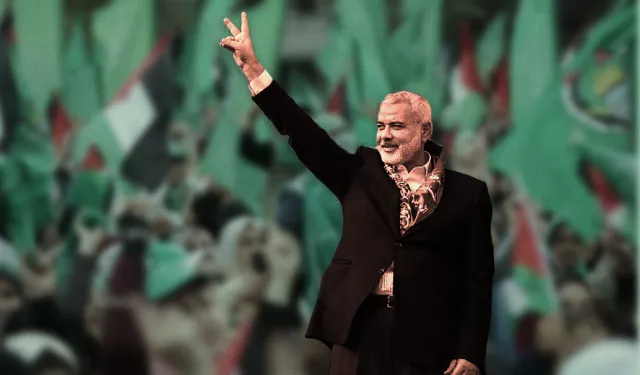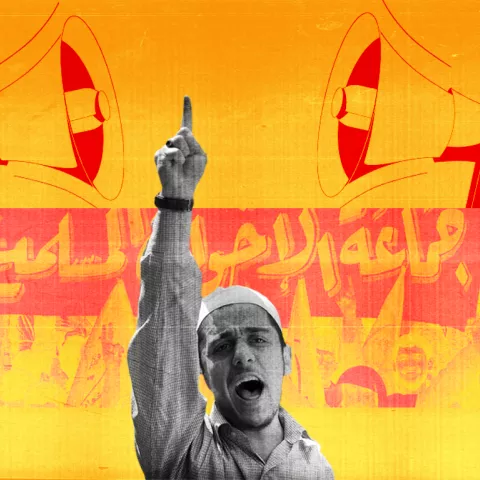
Ismail Haniyeh: The making and assassination of a statesman in a stateless nation
The assasination of Hamas political bureau chief Ismail Haniyeh in Tehran in the early hours of July 31, 2024, was more than an elimination of a senior resistance figure. It was the end of a man who, shaped by the shifting tides of regional and internal struggle, had turned into a political icon of the Palestinian cause.
Haniyeh (1963–2024) was one of the rare Hamas leaders who commanded broad political consensus across Palestinian factions and within Palestinian society. It was this uncommon standing that rendered him an exceptional leader during a time of acute political sensitivity.
Born a refugee
On May 8, 1963, he was born in Gaza’s Al-Shati refugee camp after his family fled following the 1948 Nakba and the fall of their hometown Asqalan. Ismail Abdel Salam Ahmed Haniyeh came of age in the crucible of dispossession.
He was among the earliest members of Hamas following its founding in 1987. Before that, he had already been active in the Islamic Bloc, the student arm of the Muslim Brotherhood in Palestine and the ideological seedbed from which Hamas would emerge.
While studying at the Islamic University of Gaza, Haniyeh served on the student council between 1983 - 1984 and rose to its presidency in 1985. During his tenure, he sought to bridge the bitter divide with the Fatah Youth Bloc—the student wing of the rival Fatah movement—then led by Mohammed Dahlan, who would later head the Preventive Security Force in Gaza. The rivalry between the blocs was sharp, often volatile, yet Haniyeh’s efforts at mediation signaled an early instinct for political consensus-building.
He graduated in 1987, the same year Hamas formally declared itself, and was appointed a teaching assistant at the university. Like many of his peers in the nascent movement, Haniyeh would soon find himself behind bars in Israeli prisons.
In 1989, he was imprisoned by Israeli authorities for three years. Upon his release, he was among the hundreds deported in 1992 to Marj Al-Zuhour in southern Lebanon.
From exile to leadership
Haniyeh spent a year in exile on a Lebanese mountainside following a Qassam Brigades -the military wing of Hamas- operation in which an Israeli soldier was kidnapped. The brigades demanded the release of prisoners, including Hamas' founder Sheikh Ahmed Yassin, in exchange. When Israel failed to comply, the soldier was killed, and on Dec. 17, 1992, the Israeli cabinet voted to deport all Hamas leaders.
After returning from exile, Haniyeh began ascending the ranks of Hamas’ leadership, largely due to his close relationship with Sheikh Yassin. In 1997, he was appointed his office manager. Haniyeh’s prominence grew significantly during the Second Intifada.
The year 2005 marked a turning point in his political career. He was nominated to head the Change and Reform list, which won a majority in the 2006 Palestinian Legislative Council/PLC elections. Hamas’ sweeping victory positioned him to lead the movement and, on Feb. 16, 2006, he became prime minister of the new government.
During his tenure as prime minister, Israel threatened to assassinate him following the kidnapping of Israeli soldier Gilad Shalit by Hamas’ military wing. But Israel failed to carry out the assassination due to the movement’s tight control over Shalit’s location and the negotiation process.
The rift with Abbas
On June 14, 2007, following Hamas’ armed takeover of Gaza and the expulsion of the Preventive Security Forces led by Dahlan, Palestinian Authority President Mahmoud Abbas deposed Haniyeh from his post as prime minister.
Haniyeh rejected the decree, denouncing it as “unconstitutional” and precipitous, and stated his government would continue to carry out its national duties. The PLC echoed that position, declaring the dismissal legally invalid.
From that point on, Haniyeh remained in Gaza as the head of the de facto government, overseeing the enclave’s day-to-day administration—pending the formation of a new government capable of securing the Council’s formal confidence.
A lifelong pursuit of unity
Throughout his career, Haniyeh was a persistent advocate of Palestinian unity. For the past 17 years, he worked to end the split between Hamas and Fatah, repeatedly calling for reconciliation. He even offered to step down as prime minister as part of a broader unity agreement.
On June 2, 2014, he officially transferred power to Rami Hamdallah, “Today I willingly hand over the government out of a desire to ensure the success of national unity and all forms of resistance in the next phase.”
Yet despite this gesture, the unity government quickly flaked out. Political disagreements, competing agendas, and external pressures—including Israel’s refusal to engage with any administration involving Hamas—doomed the reconciliation effort. Within months, the collaboration collapsed, and the Palestinian political landscape fractured once again.
Haniyeh's home in Al-Shati camp became a meeting point for many, especially after the 2004 assassination of Hamas figurehead Abdel Aziz Al-Rantisi, which left Haniyeh the most prominent in the movement. Following the Israeli blockade of Gaza in the wake of Hamas’ 2007 takeover, he transitioned into a statesman-like figure and a symbol of leadership.
Haniyeh’s consensus-building persona also made him a vital stabilizing force within Hamas. He managed to balance the movement’s direction and mediate between its military and political wings, both during his tenure as movement leader and during his leadership of the political bureau.
After Yahya Sinwar assumed leadership of Hamas’ political bureau in Gaza in 2017, figures from the Qassam wing—those with military backgrounds—gained prominence. Six of the members released in the Gilad Shalit prisoner exchange in 2011 joined the bureau, all with security or military credentials. Some senior figures remarked that without Haniyeh at the helm, the entire situation might have crumbled.
On the regional stage, Haniyeh played a key role in mending ties with the Egyptian leadership, especially following the fall of the Muslim Brotherhood government in Egypt. He also skillfully managed relations with Qatar, Turkey, and Iran—balancing conflicting regional interests like someone walking a tightrope.
A daunting task ahead
Since Israel launched its war on Gaza on October 7, 2023, it has pursued a systematic campaign of assassinations targeting Hamas’s political and military leadership. While few doubted the movement’s ability to replenish its ranks, this time the blow cut deeper.
Beyond his role within Hamas and the broader Palestinian arena, Haniyeh had cultivated a sophisticated network of regional and international relationships—alliances, partnerships, and channels of influence not easily replicated.
At the time of his assassination, Haniyeh was in Iran attending the swearing-in ceremony of the newly elected president, Masoud Pezeshkian.
Whether Hamas can withstand this loss—and whether it can find a successor capable of restoring both internal coherence and external balance—remains uncertain, especially amid a devastating war and the specter of a broader regional conflagration.
The ‘day after’ is today: What future for Hamas in Gaza’s vacuum?
2-8-2025

Jordan, Hamas, and the Muslim Brotherhood: A fractured alliance
30-4-2025

Ghassan Al-Dahini and the recycling of chaos in Gaza
18-12-2025

Basma Moussa: A Baha'i woman against all forms of oppression
11-12-2025

The Empire's Vizier: Epstein and the new Middle East
27-11-2025

Mamdani wins New York: A mayor who won’t apologize for being radical
6-11-2025
